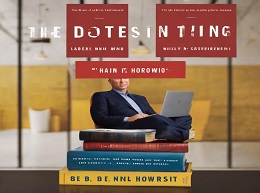The Lean Startup

In the ever-evolving landscape of entrepreneurship, where risks loom large and uncertainties abound, Eric Ries's "The Lean Startup" has emerged as a guiding light for aspiring entrepreneurs and seasoned business leaders alike. This groundbreaking book introduces a transformative approach to building and scaling startups efficiently, emphasizing a continuous cycle of validated learning and iterative product releases.
The Essence of Lean Startup Methodology
At its core, the Lean Startup methodology advocates for a systematic and scientific approach to creating and managing successful startups. Ries proposes a shift from traditional business models that often rely on elaborate business plans and assumptions. Instead, he encourages entrepreneurs to embrace a more adaptive and customer-focused mindset.
Validated Learning
The foundation of Ries's methodology lies in the concept of validated learning. This involves conducting experiments and tests to validate or invalidate assumptions about a startup's product, customers, and business model. Through this process, entrepreneurs gain real insights into what works and what doesn't, allowing for informed decision-making.
Build-Measure-Learn
"The Lean Startup" introduces the Build-Measure-Learn feedback loop, a key principle for iterative product development. Instead of investing extensive time and resources into building a complete product before launching, Ries advocates for creating a Minimum Viable Product (MVP) to quickly gather feedback from real customers. This feedback loop accelerates the learning process, enabling startups to adapt and refine their offerings based on market responses.
Real-World Examples: Bringing "The Lean Startup" to Life
To truly grasp the power of Ries's methodology, let's delve into some real-world examples that illustrate the application of Lean Startup principles.
Dropbox: Pioneering the MVP
Before becoming a household name in cloud storage, Dropbox started as a simple MVP—a video demonstration showcasing the product's functionality. This allowed the founders to gauge interest and collect sign-ups before investing significant resources in development. The Lean Startup approach enabled Dropbox to validate market demand early on, leading to its eventual success.
Zappos: Learning from Customer Feedback
Zappos, the online shoe and clothing retailer, exemplifies the importance of customer feedback in the Lean Startup framework. In its early days, Zappos founder Tony Hsieh actively sought customer input to refine the business model. By continuously learning from customer preferences, Zappos evolved into a customer-centric brand, demonstrating the effectiveness of the Build-Measure-Learn loop.
Overcoming Challenges with Lean Startup Principles
In addition to its successes, "The Lean Startup" addresses common challenges faced by entrepreneurs and provides strategies for overcoming them.
Pivot or Persevere
One of the key dilemmas faced by startups is whether to pivot or persevere with their initial ideas. Ries introduces the concept of a pivot—a fundamental change in strategy without a change in vision. By using validated learning, startups can make data-driven decisions on whether to pivot or stay the course.
Avoiding Waste
Traditional business models often involve substantial upfront investments in product development. "The Lean Startup" advocates for avoiding unnecessary waste by focusing on what customers truly value. By continuously testing hypotheses and adapting based on customer feedback, startups can minimize the risk of investing in features that may not resonate with the market.
Implementing Lean Startup Principles in Your Journey
Aspiring entrepreneurs and established businesses can leverage the Lean Startup methodology to navigate the complexities of the business world. Here are some practical steps to implement Lean Startup principles:
-
Embrace the MVP Concept: Develop a Minimum Viable Product to quickly test your ideas and gather valuable feedback.
-
Continuous Experimentation: Conduct experiments to validate assumptions and learn from real-world data.
-
Customer-Centric Approach: Prioritize customer feedback and iterate based on customer preferences and needs.
-
Build-Measure-Learn Loop: Establish a feedback loop to accelerate the learning process and adapt your strategy accordingly.
Conclusion: A Roadmap to Success
"The Lean Startup" by Eric Ries is not just a book; it's a roadmap to success for those willing to challenge conventional wisdom and embrace a dynamic, customer-centric approach. By incorporating Lean Startup principles, entrepreneurs can navigate the uncertainties of the startup journey with resilience and innovation, ultimately increasing their chances of building successful and sustainable ventures.
In the spirit of Lean Startup methodology, let the journey of innovation begin!
Are you ready to transform your ideas into successful ventures? Explore 'The Lean Startup' and revolutionize your approach to entrepreneurship.









